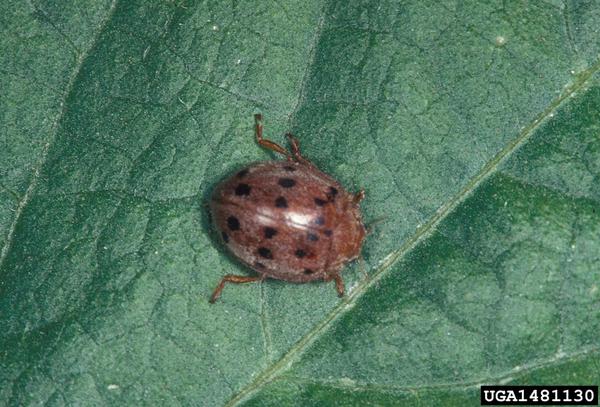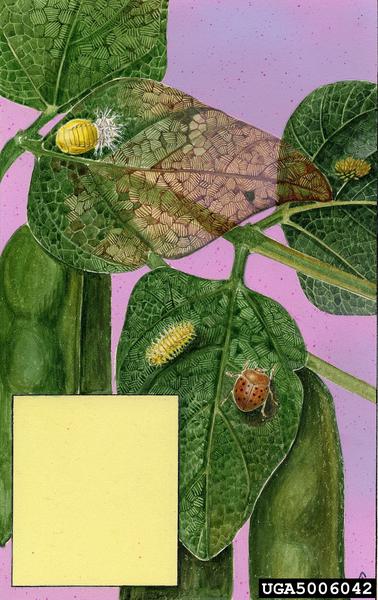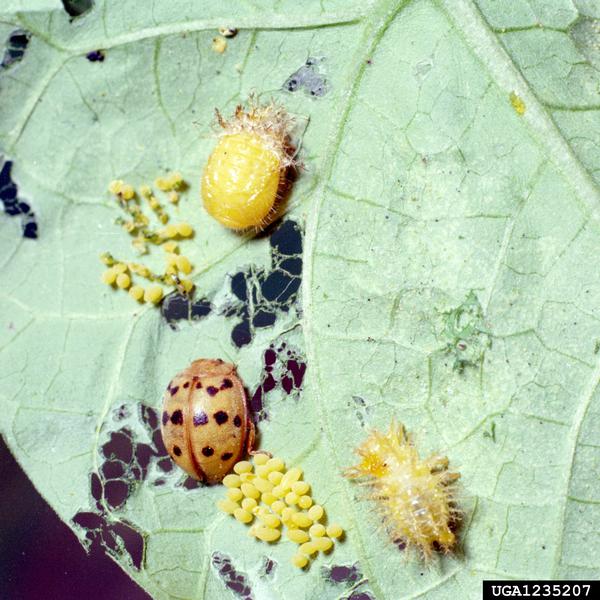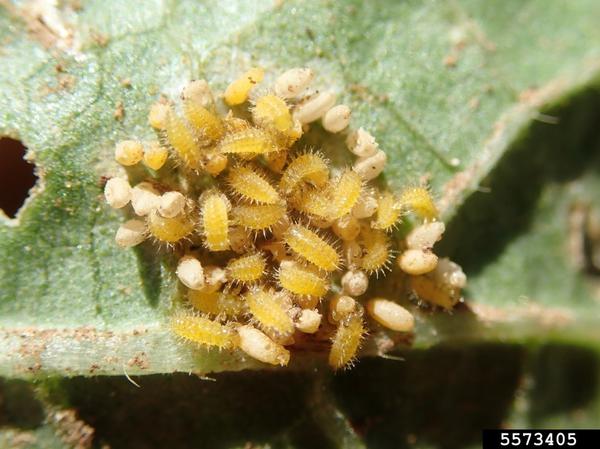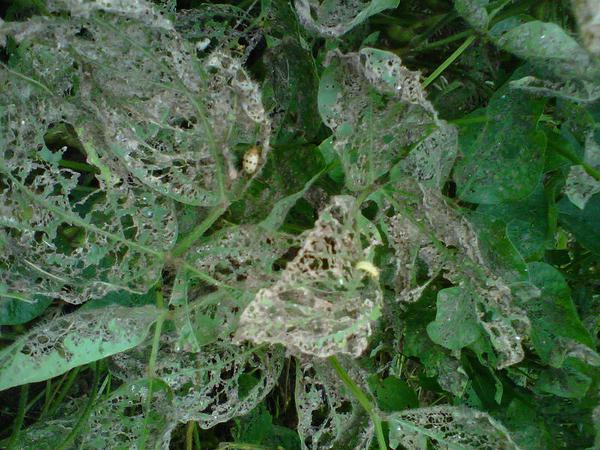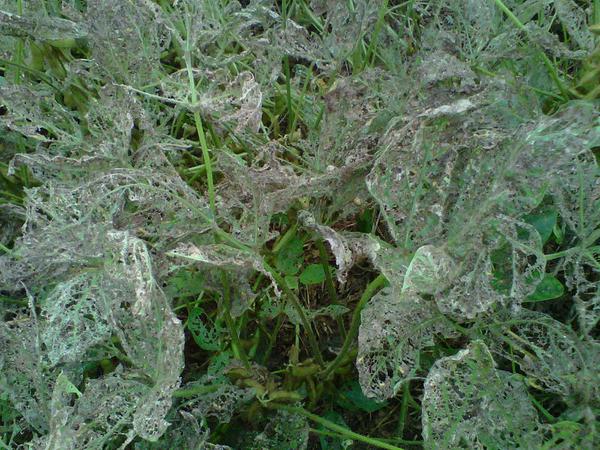Mexican Bean Beetle
- Scientific Name(s)
- Epilachna varivestis
- Type
- Insect
- Leaf Condition
- Lace Like Skeleton, Chewing Damage, More Feeding Young Leaves
- Leaf Color
- Patchy Yellow And Brown Areas
- Prior Environmental
- Cool Cloudy
Mexican bean beetle
(Epilachna varivestis Mulsant) Chrysomelidae: Coleoptera
Biology and identification
Adults are copper to yellow, rounded beetles with 16 black spots on their backs. Larvae are yellow, oval, soft-bodied, grub-like insects with darker, branched spines. This insect overwinters as an adult and lays yellow colored eggs vertically in masses on the underside of soybean leaves. There is only one generation a year, and there are four larval stages.
Injury and damage
Larvae and adults will feed on all parts of the plant, but injury is generally most severe on the foliage. Younger leaf tissue is preferred. Beetles feed between the leaf veins, causing a lacy appearance in heavily injured leaves. Because they feed on the underside of the leaf, patchy yellow and brown areas can often be visible on the tops of injured leaves. Mexican bean beetles attack soybeans throughout the season, but most damage occurs in August and September. Mexican bean beetles typically do not cause economic damage in North Carolina, but occasional severe infestations occur, especially in unusually cool, cloudy summers.
Economic threshold
The threshold for defoliating insects is 30% defoliation throughout the plant canopy two weeks prior to blooming (R1) and 15% defoliation throughout the plant canopy two weeks prior to flowering (stage varies) until the pods have filled (R7-R8). Vegetative soybeans are tolerant of adult feeding and, as seedlings become larger and faster growing, this foliage loss is seldom of concern. Recent studies have demonstrated that soybeans can tolerate nearly 100% foliage loss during the early vegetative stages before yield loss is achieved.
Management
Recommended insecticides can be found in the North Carolina Agricultural Chemicals Manual.



